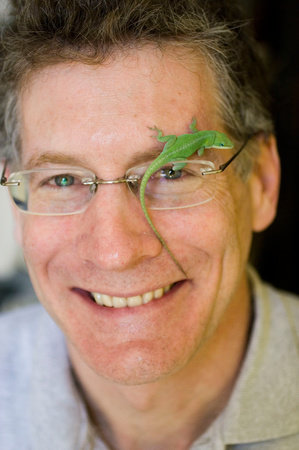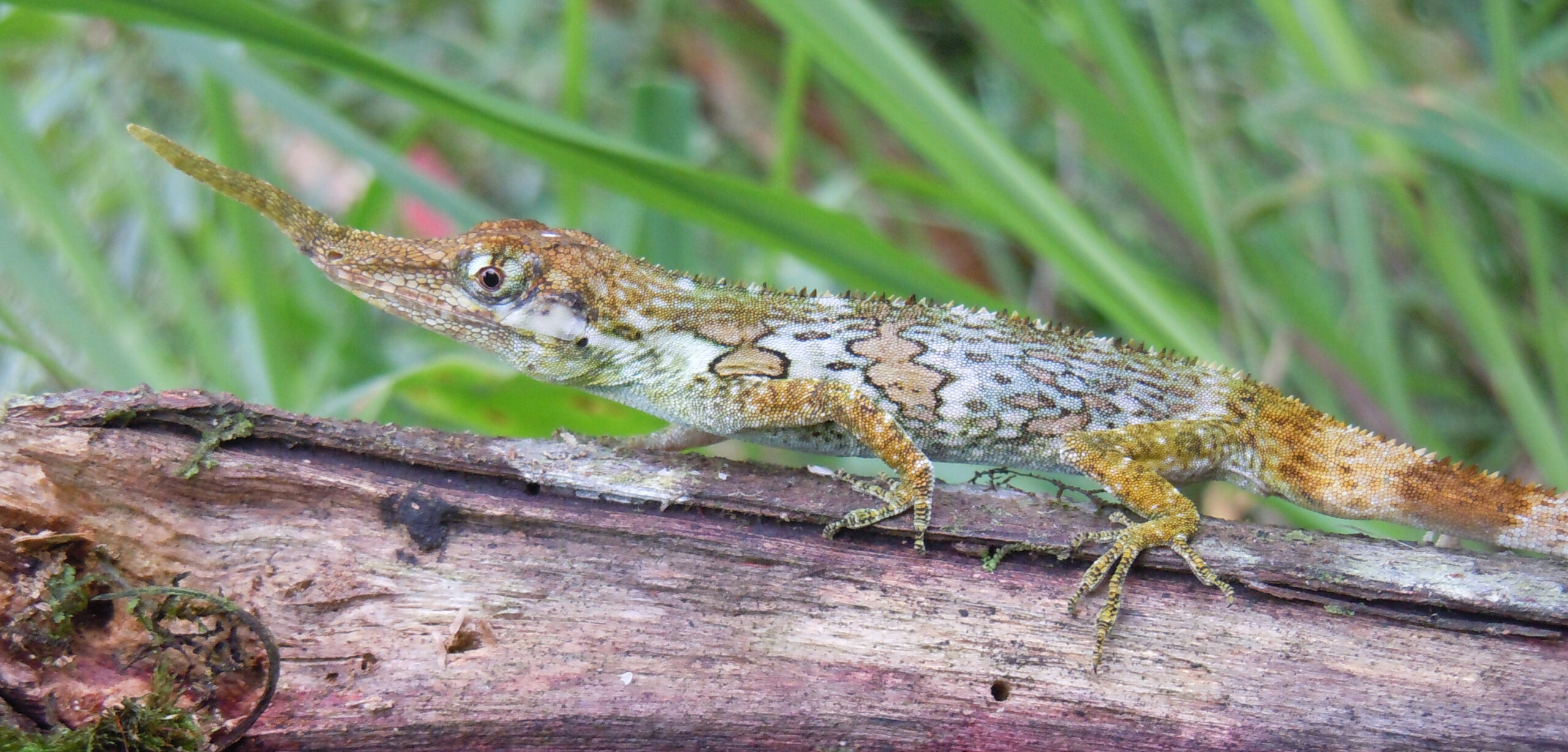Renowned evolutionary biologist Jonathon Losos has spent his storied career studying anole lizards in South America and the Caribbean.
The small, primarily tree-dwelling creatures, a relation to the iguana, encompass some 400 species, and nearly half of them live on islands. The lizards are well-suited to evolutionary studies, Losos said, because they are very diverse and somewhat isolated.
Losos, the William H. Danforth Distinguished Professor and professor of biology in Arts & Sciences at Washington University, is best known for his research on convergent evolution and adaptive radiation, and for experimental studies of evolution in nature. Convergent evolution, the idea that common environmental factors drive evolutionary change, occurs most often when species adapt to the same environmental circumstance in the same way.
“It has been exciting to see that these lizards can evolve very quickly,” Losos said. “Natural selection can be strong, and evolutionary change can occur so fast; you can almost watch it with your eyes. Darwin missed this. He thought evolution occurred at a glacial pace.”

Losos and his colleagues studied anoles on four large islands in the Caribbean—Cuba, Hispaniola, Jamaica, and Puerto Rico—looking for answers regarding where they originated and how they spread throughout the regions.
The team found that anoles evolved independently on the four islands yet produced roughly the same set of physical traits as their kin when faced with similar environmental challenges. For example, lizards that lived close to the ground had longer, stronger legs that enabled a speedy escape from predators. Lizards living in trees had shorter legs, giving them agility when navigating narrow branches, and larger toe pads that helped them cling to smooth leaves and bark.
In another study, Losos and his team discovered an evolutionary response to hurricanes on a wide geographic scale. They found that lizards’ toe pads are longer and stronger, within and between species, on island habitats prone to hurricanes. This feature allows the creatures to hold tight to a surface and demonstrates that climate can act as an agent of natural selection. The research suggested that the adaptation was genetic.
Lizards in an Evolutionary Tree (University of California Press, 2009), Losos’ classic book, details his efforts to study a collection of DNA samples from 55 species of Anolis with a goal to build an evolutionary tree that encompasses every ecomorph, or lizard form, on all four islands. DNA analysis revealed that members of the same ecomorph on different islands were not closely related; rather, species on the same island tended to be close relatives. Despite all the variation among the lizards, those living on the same island were more closely related to each other than to the species on other islands. Repeatedly, on all four islands, anoles and their distant relatives came up with the same solutions to the same ecological problems.
“This suggested that evolution is deterministic, very predictable,” Losos said. “We use the term adaptive radiation to refer to the phenomenon when one ancestral species diversifies into different species adapted to different parts of the environment. Darwin’s finches on the Galapagos are a classic example of this phenomenon.”
Studying Little Known Species, Past and Present
In the summer of 2010, Losos led a team of American, Ecuadorian, and Belgian scientists to Mindo, Ecuador, to study and collect data on the horned anole, Anolis proboscis, a species about which almost nothing was known and which, until just a few years previous, had been feared extinct. Nothing was known about the biology of this male lizard, “denizen of Andean forests, possessor of an enchanted sword, and all-around lizard of mystery,” Losos wrote with characteristic flair in “Anole Annals,” a blog he co-founded with Rich Glor of the University of Kansas. “Our work was exciting, pure discovery, very rewarding,” Losos recalled.
Losos said his research has focused entirely on living species due to fossil records that quickly decompose in tropical habitats. Only three specimens had been described in 2015, when Losos and his colleagues examined a treasure trove of new amber fossils from the Miocene Epoch.
“We examined specimens of anole babies from 20 million years ago from what is now the Dominican Republic,” Losos said. “There were 39 specimens in amber in museums or privately owned collections. We employed X-ray microcomputed tomography to settle a long-held debate about whether the structure of ecological communities can exhibit stability over macroevolutionary timescales. The results provided clear evidence for the stability of communities over time.”
In 2020, Losos received a 1.2M grant from the Human Frontier Science Program Organization, based in Strasbourg, France, to study evolution of Central American lizards anoles. Losos and his team will sequence the genomes of 200 species of Anolis lizards and combine their results with advances in gene editing.
Losos had served on Washington University’s faculty from 1992-2006, when Harvard recruited him as the Lehner Professor for the Study of Latin America, professor of organismic and evolutionary biology, and curator in herpetology at the Museum of Comparative Zoology. He returned to WashU in 2018 to become the William H. Danforth Distinguished Professor and professor of biology in Arts & Sciences. He was simultaneously appointed director of the Living Earth Collaborative, a center dedicated to advancing the study of biodiversity to help ensure the future of Earth’s species in their many forms. Washington University, the Missouri Botanical Garden and the Saint Louis Zoo are working in partnership to advance the center’s mission.
During his career, Losos has mentored more than 100 young scientists, many of whom are taking the work in new and exciting directions.
Jonathan Losos speaks to the value of evolutionary thinking and studies
Evolutionary thinking and studies tell us about who we are and where we came from. They give us our back story. Moreover, they tell us how the world developed. More concretely, understanding evolution can be crucial to solving important problems facing humanity. And there’s no better example than the recent COVID-19 pandemic.
The researchers who studied strains and variants of COVID are evolutionary biologists. This is how we study where new diseases come from. One of the biggest problems facing us today regards microbes evolving resistance to drugs. There is a threat that all our antibiotics may be rendered useless due to this evolution. We need to understand and try to counter this threat.
We face another important question: How will the world cope with global warming? Species may evolve to adapt to these changes. How would this work? Which species will evolve? The survival and function of futuring ecosystems may critically depend on the evolutionary capabilities of the world’s species.
